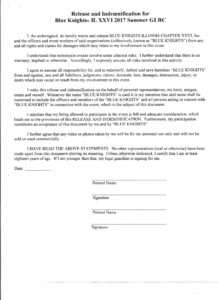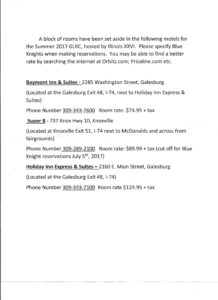1. Ride in a precise formation as road conditions permit.
2. Execute signs and turns properly.
3. Do not fool around. No horseplay when riding with the group. Any member observing another member fooling around in formation should discuss it with that member and attempt to clear up the situation. If it should persist, bring it to the attention of the Road Captain (R/C) or one of the Assistants.
4. Riding Positions:
a) While on any run, the R/C or his assistant will ride in front. The President may rid along side or just behind the R/C depending on the formation in use. In the absence of the R/C and/or the assistants, who ever the R/C or President appoints will ride point.
b) The assistant R/C will ride at the rear unless otherwise directed by the R/C.The assistant will be responsible for holding lane open while making a lane change. He will also assist any member who may break down or fall behind. The R/Cs will operate as a team and watch for problems within the group. Watching for all signals and seeing the need for changes are major parts of the assistant R/Cs job.
c) Line up for a ride as follows: R/C, President, full color wearing members, followed by Sgt-at-Arms, prospective members and non-members. Bringing up the rear, the assistant R/C and the Tail gunner. Once you are in a position, keep it for the remainder of the ride.
d)The R/C will give instructions to all riders prior to the start of a ride. This will include, if known, the name, address, and phone number of the destination. When you arrive at the destination point, check in with the R/C.
e) Each member shall make it his business to know the route to be taken.
5. Use common sense at all times:
a) Anticipate your next move as well as those of the group.
b) We are all aware of the proper safety procedures and the need for them. Let us exercise caution at all times and obey all traffic regulations.
c) With regard to remaining alert, as one of a group, you must remember that the R/C from time to time will be giving a hand signal to execute a maneuver (pass slow moving vehicle, make a turn, etc.) He will be taking into consideration the size of the group and the distance necessary to get the club from one lane to another safely. Each member’s assistance in executing the maneuver safely and smoothly will be of great help. Rear R/C(s) will help the group by getting out into the lane following the forward R/C’s signal. By doing this he will help secure the chance to execute the maneuver freely and safely. Stay in position during any lane change or direction maneuver.
6. Leaving the Group: If stopped, let your intentions be known to the R/C or his assistant(s). The convoy will be pulled into the nearest and safest rest area. The R/C will then decide when to get the group on its way as soon as possible and make arrangements to have the stopped rider and his bike taken care of, if necessary.
7. Gas Stops: Get to know your machine’s cruising range with regard to gas. Running out of gas or making gas stops with large groups is time consuming. Therefore everyone will arrive for the rides with a full tank of gas and will top off their tank at every gas stop, no matter how small the amount. This will avoid staggered gas stops and possibly save time.
8. Bike Maintenance: Maintain it carefully, this is considered a must. One person failing to check for loose wires, shorts, dead batteries, worn tires or worn chains/belts can take away from the pleasure of the club ride.
9. Wearing Apparel: It is strongly urged that on club rides each member wear his club colors. He/She should also wear the proper clothing when riding. Helmets are preferred. Strict adherence to these guidelines will provide for a long, successful and safe riding season.
Blue Knights Missouri III
Ride with Pride




